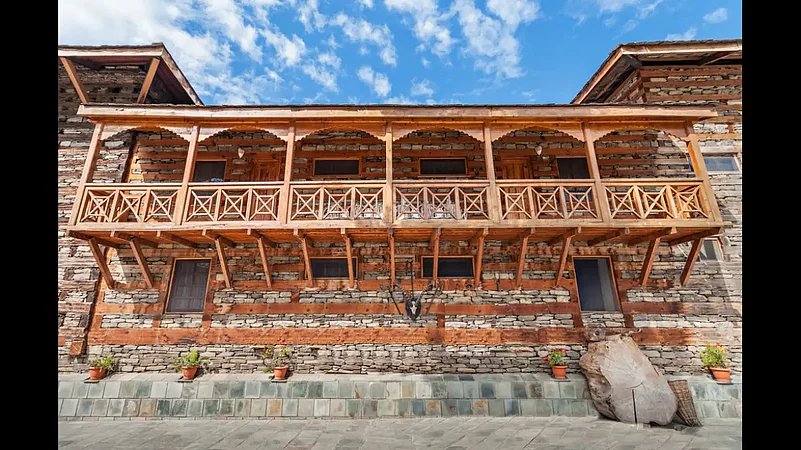Traditional architecture has always made the best use of locally available materials. Builders in the plains of Bengal preferred terracotta (burnt bricks) as clay was plentiful in this riverine land. Similarly, builders in the high Himalayas depended on wood and stone. The artisans developed their own styles while using locally available materials. Unfortunately, like many other traditional art forms, these too are on the wane, falling prey to modern lifestyle, conveniences, and materials.
Himachal Pradesh, with its lofty mountains and scenic valleys, is a popular tourist destination. But not many stop to look at the wooden architecture that were once common here. These finely carved wooden artworks were an integral part of temples, people’s homes, and other buildings.
Advertisement
However, years of neglect and ill-advised renovation as well as the advent of modern building materials have almost dealt a death blow to the artistic wood art of Himachal. While remnants of this dying art can still be seen in remote areas, you may catch glimpses of these along the popular tourist circuits, especially at the temples – wooden roofs, carvings on the walls, and balconies.
One of the best examples of wooden architecture is the Hadimba Devi Temple in Manali. Also known as the Dungri temple, it was constructed in the mid-16th century. The façade and the windows of this pagoda-style temple are embellished with woodwork. Traces of old woodwork can be seen on the projected balconies and the door frames. You may also go up to the Manu Temple (about three km from Manali town center) to catch a glimpse of the wooden art.
Advertisement
Naggar, erstwhile capital of the Kullu royals, is less than 21km from Manali. The palace and many of the temples here are fine examples of indigenous wooden architecture. The Naggar Castle (now a heritage hotel of HPTDC) is said to be built in the mid-15th century in the prevailing kathkuni style of architecture.
One of the highlights of Himachal Pradesh’s wooden architecture is kathkuni. The term kathkuni originated from two Sanskrit words – ‘kastha’ meaning wood and ‘kone’ meaning corner. This indigenous style in simple terms consists of walls made of interlocked wooden planks with stones packed in between without mortar. It is said that this type of architecture helped the buildings survive many earthquakes.
However, the continuity of wooden architecture is now a matter of debate. When the art form was at its peak, the region was sparsely populated and densely forested. But the equation has changed drastically now. Urging people to use wood may have a negative effect on the forest. But can we allow the art to disappear altogether? Can the old buildings be preserved for posterity? These are some of the questions that have to be addressed if we do not want this wealth of vernacular architecture to disappear.




















